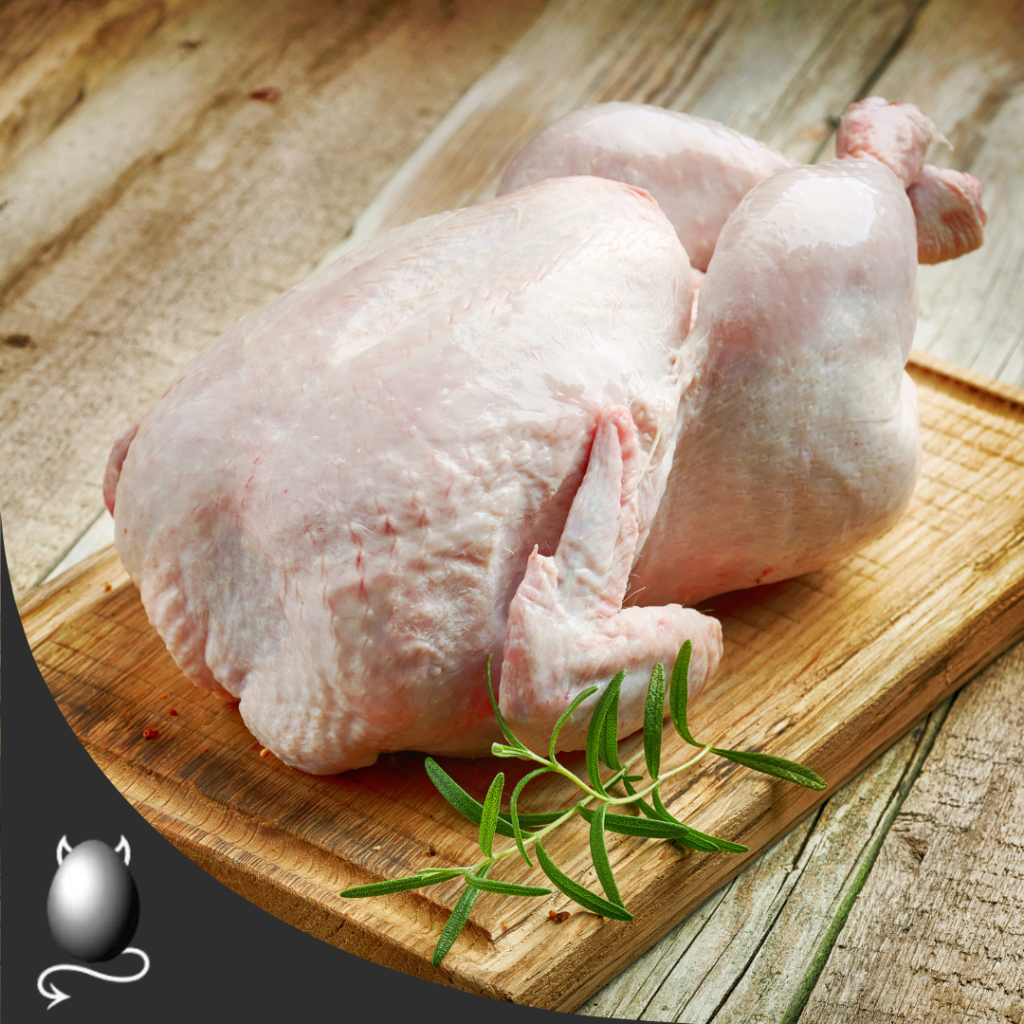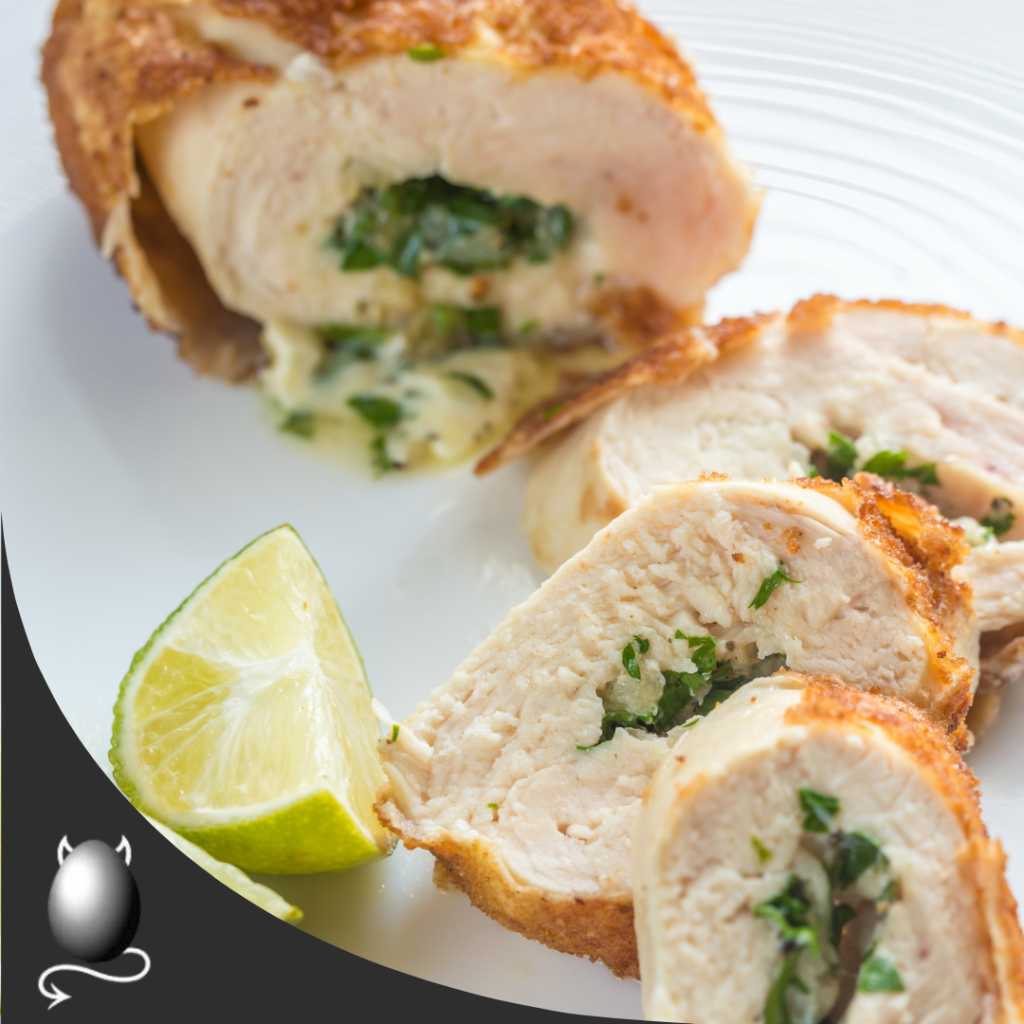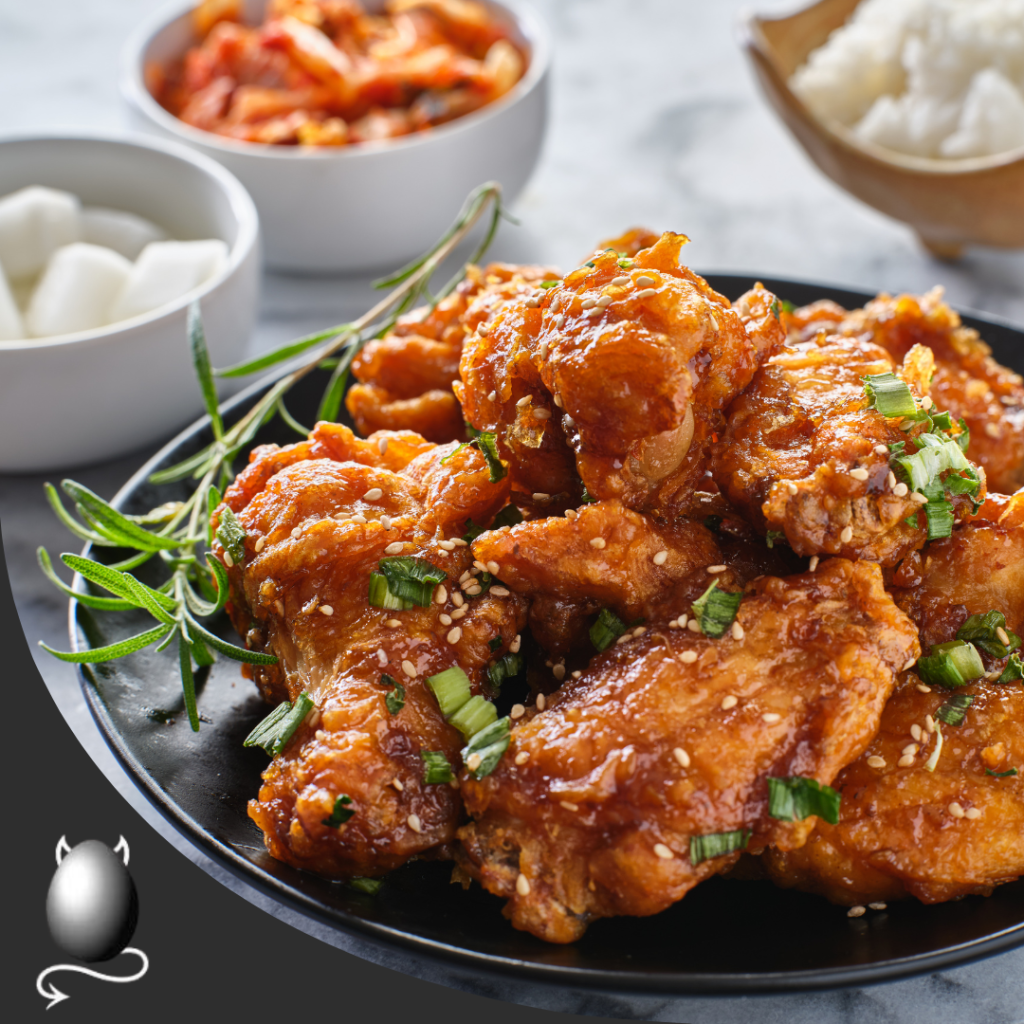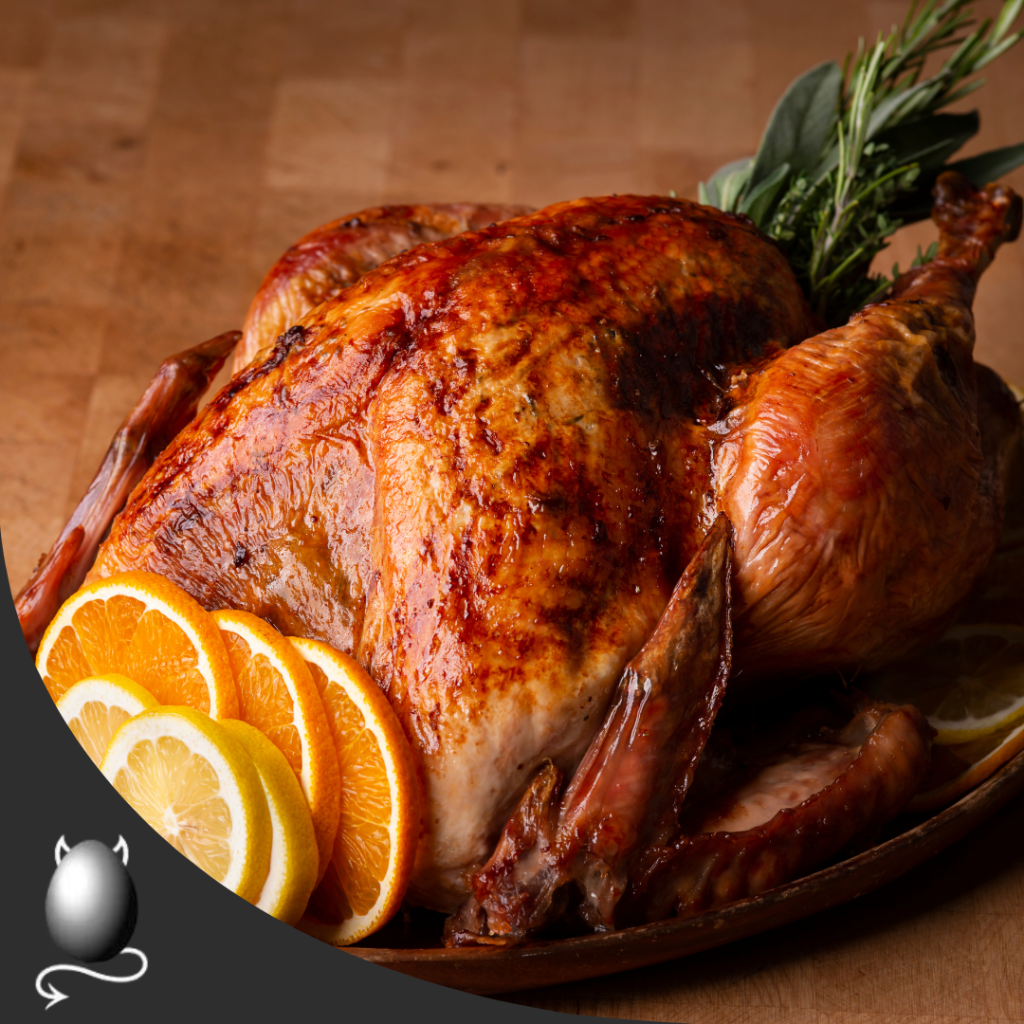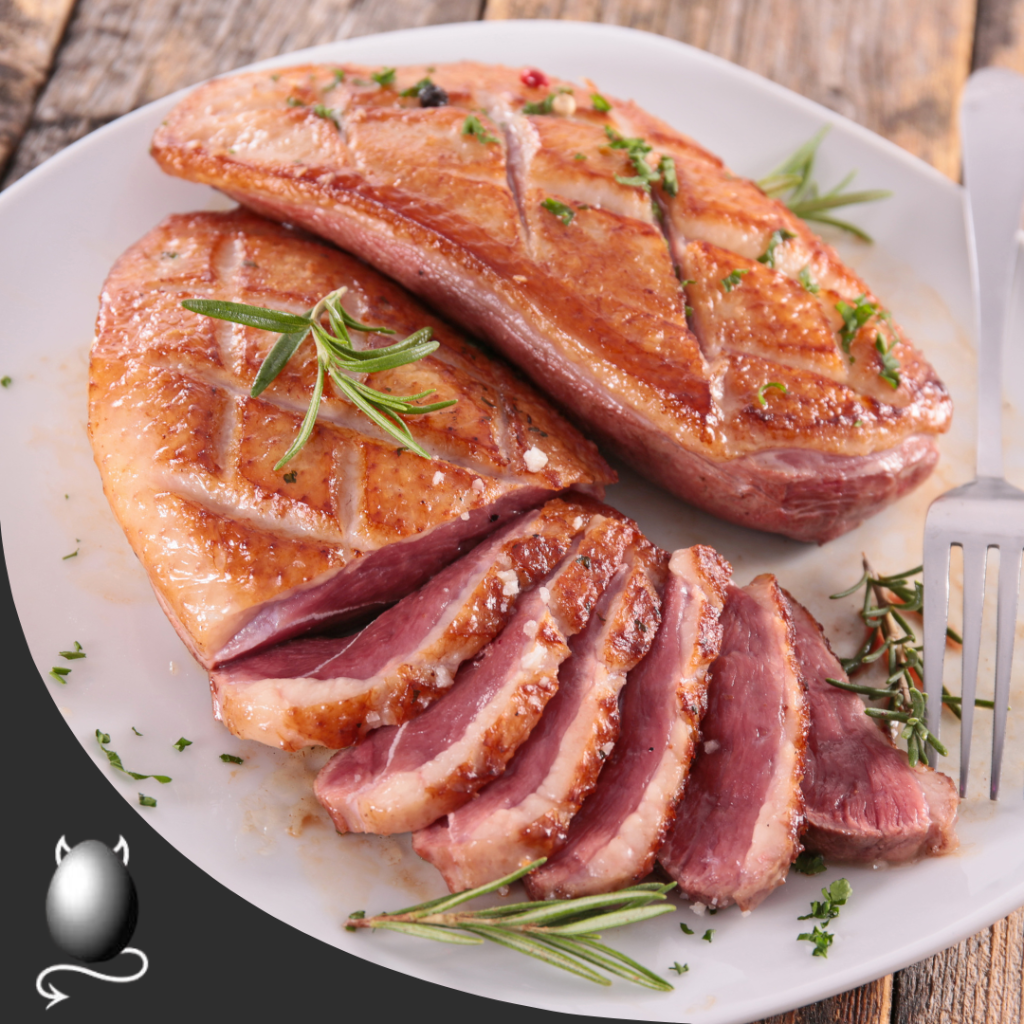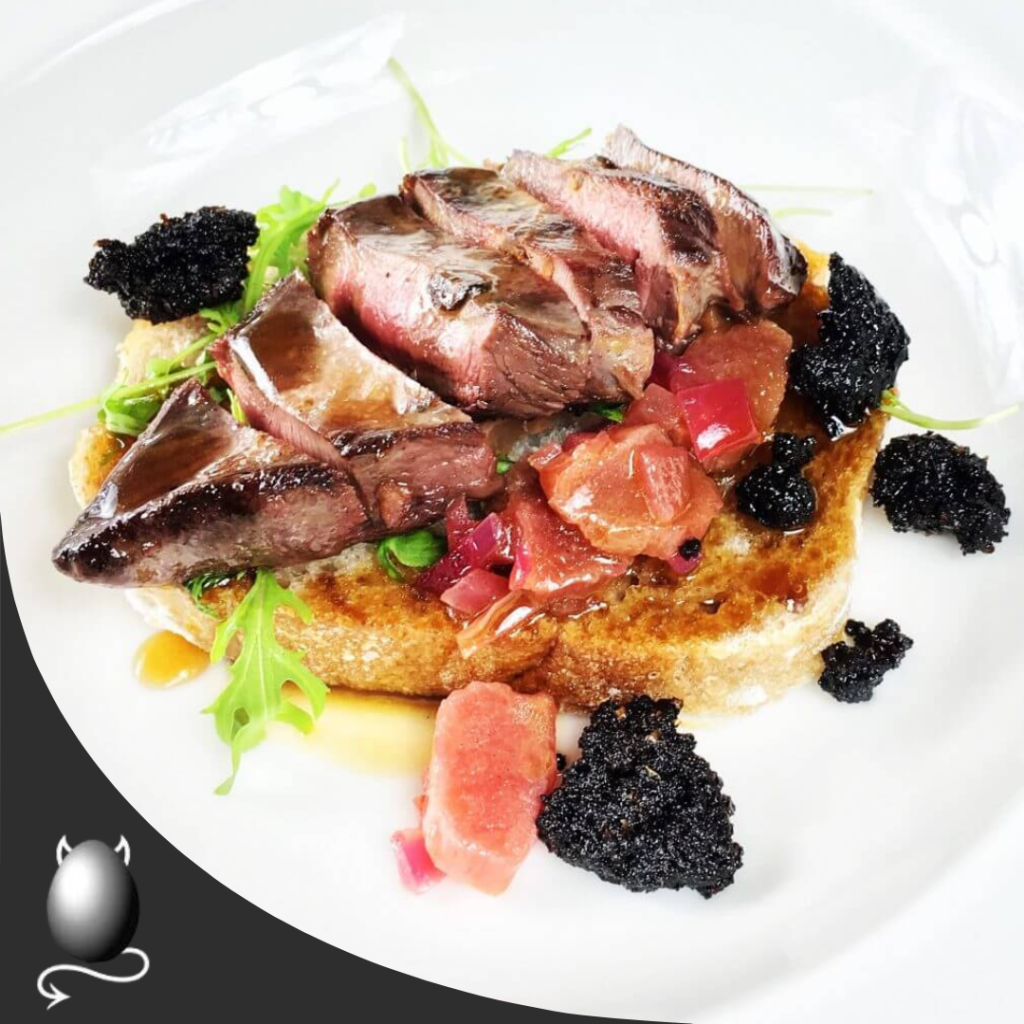These courses are an access anytime e-learning resource provided free of charge by The Devilled Egg Cookery School which anyone can join.
Our ethos here is all about transferable skills, knowledge and techniques – why take the trouble to learn just one recipe when, with a little extra effort, you can learn a principle which underpins dozens, even hundreds of similar recipes.
Knowing how to joint a chicken is a good example. It may not seem that crucial at first, but it’s a very useful thing to know, even if you don’t do it often.
All you need is a whole chicken
PRESS HERE to view now
Chicken Kyiv is always a crowd pleaser and this recipe is a great way to cook a chicken breast.
This recipe includes making your own garlic butter and serving with crushed new potatoes.
2 chicken breasts
2 eggs
100g plain flour
100g breadcrumbs
Garlic butter:
150g unsalted butter, room temperature
3 tablespoons of chopped chives
1 tablespoon of finely chopped mint leaves
1 teaspoon of white miso paste (optional)
Zest of 1 lemon
Crushed potatoes:
250g new potatoes
100g of fresh or frozen peas
2 handfuls of chopped watercress
60g unsalted butter
PRESS HERE to view now
Fried chicken transcends cultural boundaries and can find an audience just about anywhere in the world. From the restaurants of the American deep south to wedding banquets in Guangzhou, China, its combination of crunch and succulence is enjoyed around the world in countless variations.
400g chicken wings
2 tablespoons rice vinegar
1 tsp fish sauce
1/2 tsp dried ginger
1/2 tsp salt
1/2 pepper
100g potato starch
1/2 teaspoon of salt
1/2 teaspoon of pepper
Sauce:
4 tablespoons of honey
3 tablespoons ketchup
3 tablespoons Korean chilli paste
1 tablespoon of sesame oil
1 clove of garlic, finely minced
1/4 teaspoon fresh ginger, finely minced
2 tablespoons dark soy sauce
Finish with a squeeze of lime
PRESS HERE to view now
The ordeal of roast turkey gets a whole lot easier once you start to factor in principles like ‘two-speed’ cooking, basting and resting.
Strongly associated with Christmas and Thanksgiving, turkey is often the meat of choice for festive, celebratory meals with lots of guests, at least in the West. Its large size and accessible-yet-versatile flavours explain its popularity. But it’s not the easiest meat to prepare and many home cooks actually dread the annual task of roasting a turkey.
The first thing to say about turkey, and poultry in general, is that different parts of the animal cook in different ways, just like other types of meat. The dark meat of the legs and thighs is hard-working muscle and cooks more slowly than the white meat of the breast. Short of jointing the bird and cooking it separately, there’s no real way around this fact
You can tenderise the meat by brining the turkey. This is a very American thing to do, and a good way to keep the meat feeling nice and moist. The problem is, you’ll need a bucket large enough to submerge an entire turkey in saline, not to mention a refrigerator large enough for the bucket itself! For most households, that’s not feasible. Dry brining is also an option, but you still need to wash the turkey afterwards, which means a lot of splashing around with raw meat. Again, not ideal for most domestic kitchens. Of course, brining doesn’t stop the breast from overcooking; it just tenderises the meat which can mitigate the dryness that comes with overcooking.
1 turkey
400g softened butter
2 tablespoons of salt (for the butter, the cavity and the skin of the bird)
2 carrots
1 heart of celery
2 red onions
1 lemon
1 small bunch of thyme (half of the leaves removed and added to the butter)
1 teaspoon of chopped rosemary leaves
1 tablespoon of each herb, chopped:
Parsley
Tarragon
Sage
PRESS HERE to view now
Perfectly cooked duck breast is a balancing act. How do you render the fat and crisp up the skin without overcooking the meat? This tutorial shows that it’s actually quite easy to achieve.
All you need is a duck breast
PRESS HERE to view now
We’re taking several pretty familiar ingredients into somewhat unfamiliar territory.
The first is wood pigeon – a lovely meat which has been popular in Britain for centuries; the second is black pudding which we usually identify with breakfast; and the third is rhubarb!
2 pigeon breasts
1 tablespoon dried oregano
1 teaspoon of dried garlic powder
10 green peppercorns
100g black pudding
2 slices of sourdough bread or brioche
Compote:
2 stalks of rhubarb
1 teaspoon of honey
1 small red onion
Dressing:
1 tablespoon honey
1 tablespoon balsamic vinegar
Pinch of salt and
Small dribble of truffle oil
2 tablespoon of olive or vegetable oil
1/2 teaspoon of Dijon mustard
PRESS HERE to view now


